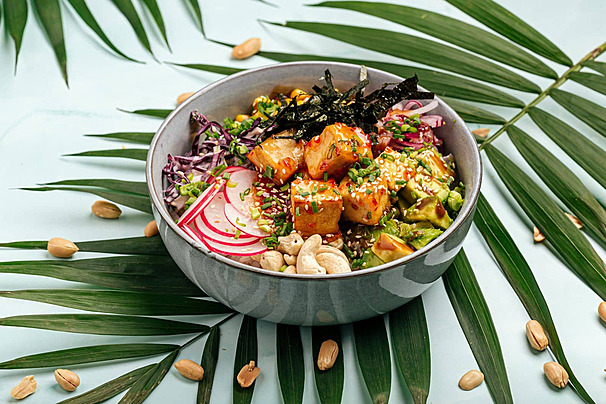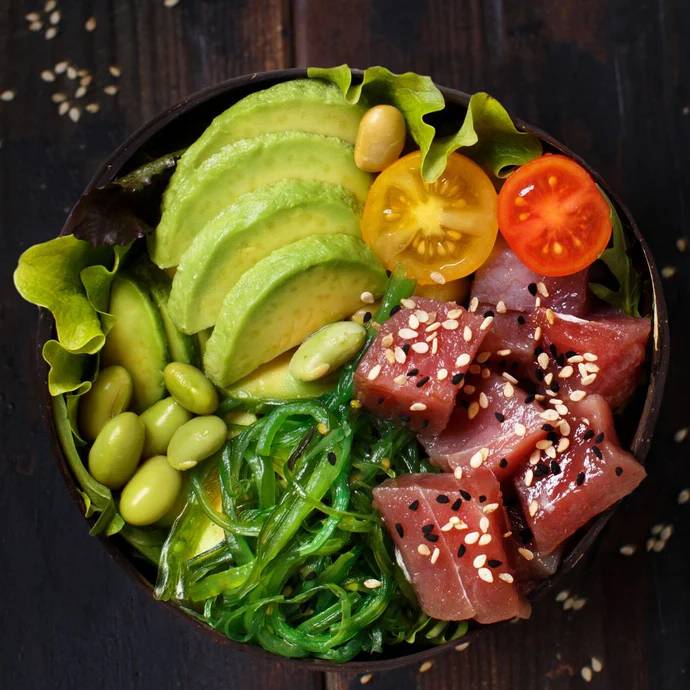
Introduction
Nestled in the heart of Hawaiian cuisine, O-Pok-ke bowls have emerged as a global sensation that has captivating taste buds with their vibrant flavors and cultural heritage. At O Poke Restaurant, we invite you to embark on a journey through the fascinating history of Poke, tracing its roots, traditions, and modern-day evolution.
Origin of O-Pok-ke Bowls: A Glimpse into Hawaiian Tradition
The story of Poke begins centuries ago on the volcanic shores of Hawaii, where indigenous Polynesians first cast their nets into the Pacific Ocean in search of sustenance. Drawing inspiration from their natural surroundings, they crafted a simple yet ingenious dish known as poke, which means “to slice” or “cut crosswise into pieces.”
Traditionally, poke consisted of freshly caught fish, typically tuna or octopus, marinated in a blend of sea salt, limu (seaweed), kukui nut (candlenut), and cinnamon (roasted crushed candlenut). These ingredients preserved the fish and imbued it with a depth of flavor unique to the islands.
Why Seafood?
Seafood is not only delicious but also incredibly nutritious. Rich in essential nutrients like omega-3 fatty acids, vitamins, and minerals, seafood promotes heart health, boosts brain function, and supports overall well-being. Incorporating seafood into your diet can contribute to a balanced and healthy lifestyle.
Evolution of O-Pok-ke Bowls: From Tradition to Global Phenomenon
As Hawaii’s cultural tapestry expanded, so did the culinary landscape, giving rise to many poke variations. Influences from Japanese, Korean, and Filipino cuisines introduced new ingredients and techniques, further enriching the flavor profile of poke.
In the 1970s, introducing soy sauce and sesame oil transformed traditional O-Pok-ke into what we now recognize as modern O-Pok-ke bowls. With the addition of ingredients like avocado, edamame, and mango, O-Pok-ke evolved into a customizable dish, reflecting its consumers’ diverse tastes and preferences.
O-Pok-ke Bowl Trends: Shaping the Future of Hawaiian Cuisine
In recent years, poke has transcended its island origins to become a global phenomenon, captivating food enthusiasts with its fresh, health-conscious appeal. From food trucks to fine dining establishments, O-Pok-ke bowls have proliferated across menus, offering endless combinations of proteins, toppings, and sauces.
Today, O-Pok-ke bowl trends continue to evolve, embracing innovative ingredients like quinoa, kale, and even plant-based proteins to cater to a growing demand for vegetarian and vegan options. With an emphasis on sustainability and locally sourced ingredients, poke has become a meal and a culinary experience that celebrates the harmony between land and sea.
Indulge in the Irresistible Flavors of Poke at O Poke Restaurant
At O Poke Restaurant, we’re committed to preserving the rich heritage of Poke while embracing the culinary innovations that continue to shape its future. Join us as we celebrate the flavors of Hawaii and embark on a culinary adventure unlike any other. Dive into a world of freshness, taste, and tradition with every bite of our exquisite O-Pok-ke bowls.
FAQs
What fish is typically used in O-Pok-ke bowls?
Traditionally, O-Pok-ke bowls feature ahi tuna or octopus, but variations may include salmon, shrimp, or tofu to accommodate different dietary preferences.
Are O-Pok-ke bowls gluten-free?
While O-Pok-ke bowls can be gluten-free depending on the ingredients used, it’s essential to check for potential sources of gluten in sauces and toppings.
How long can I store leftover O-Pok-ke?
Leftover O-Pok-ke should be refrigerated promptly and consumed within 1-2 days to ensure freshness and food safety.
Can I customize my O-Pok-ke bowl at O-Pok-ke Restaurant?
Absolutely! At O-Pok-ke Restaurant, we offer a wide selection of fresh ingredients and house-made sauces, allowing you to create a O-Pok-ke bowl tailored to your tastes.
Are there vegetarian options available?
We offer vegetarian and vegan-friendly options, including tofu, marinated mushrooms, and various fresh vegetables, to cater to all dietary needs.

